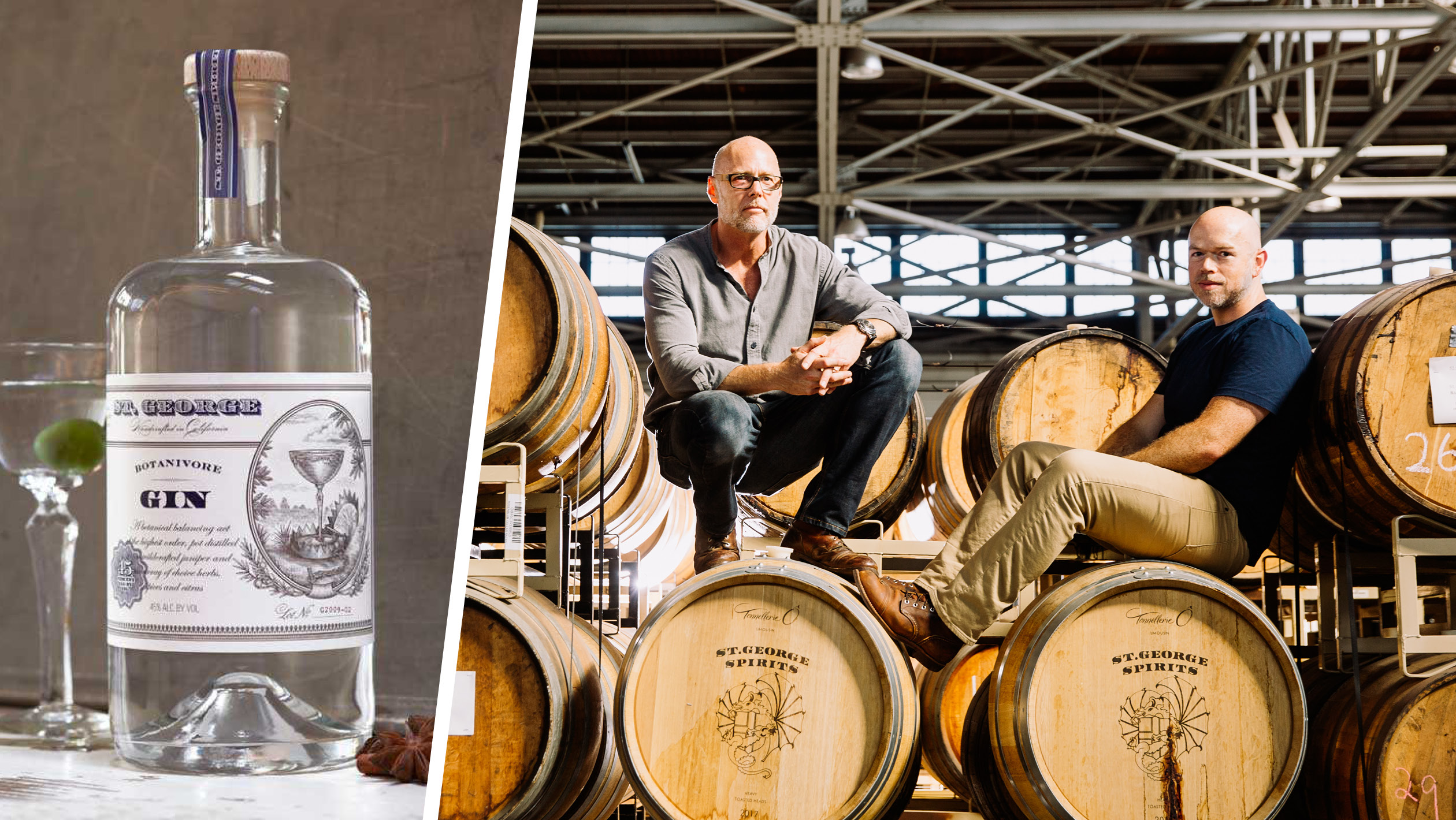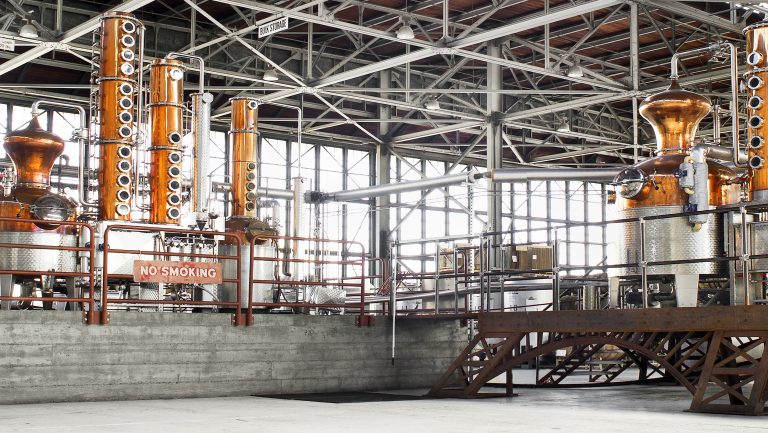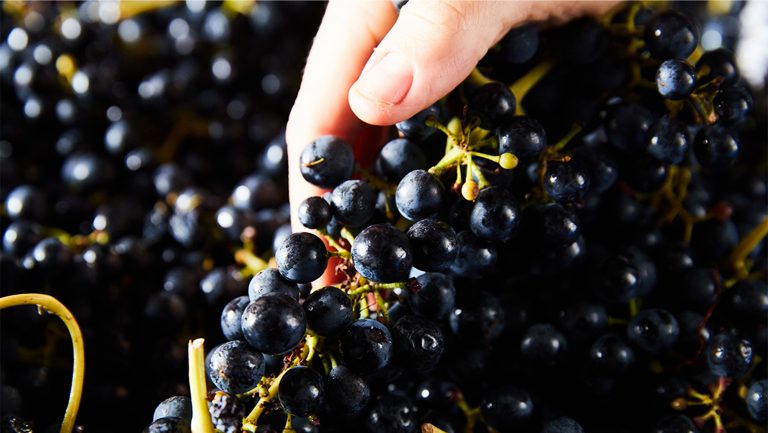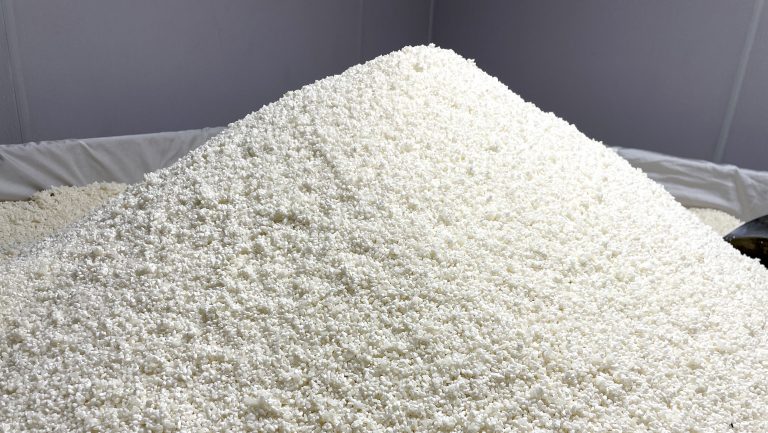The most distinguishing factor that gin consumers reference about a brand tends to be its list of botanical ingredients. Perhaps one imbiber is a fan of cucumber peels and rose petals and another prefers yuzu and sansho pepper.
The profile of a particular gin, however, comes down to more than just its chosen botanicals—the methodology of how those botanicals are extracted has an enormous impact on the final flavor of the spirit in the bottle.
“Gin production is not solely about the choice of botanicals,” says Anne Brock, Ph.D., Bombay Sapphire’s master distiller and gin category director. She combined her educational track in organic chemistry with her background as a bartender to become a distiller with a multifaceted perspective. “Even with the same botanical recipe, employing distinct production methods can yield remarkably different outcomes.”

Don’t miss the latest drinks industry news and insights. Sign up for our award-winning newsletters and get insider intel, resources, and trends delivered to your inbox every week.
What Is Flavor in Gin?
Creating flavor in gin is not as simple as adding a dried orange peel that provides an orange taste or aroma. Specific chemical compounds produce the signature flavor characteristics of given ingredients, and those compounds can be found in different places, enhanced in different manners, and unlocked in different ways.
“There’s not really any such thing as ‘the flavor of juniper’ or ‘the flavor of coriander’ in terms of what you can extract; there are different chemical compounds that have those flavors,” says David T. Smith, a spirits judge and author of books including The Gin Dictionary. It’s alpha-pinene that gives that piney nature to gin, and limonene that delivers citrus notes, to name two of dozens or hundreds of chemical signatures that may be found in a given bottle.
“Some of those are soluble in water, such as limonene, so if you put lemon peel in hot water you’ll get some flavor from it,” Smith says. “Others are not, such as pinene, which is why you need the alcohol to extract that piney flavor that we associate with juniper and thus associate with gin.”
Methods of Botanical Extraction
The most common manner of botanical extraction combines botanical maceration in spirit prior to distillation, a method sometimes referred to as steeping and boiling. “Maceration and distillation, to this day the most common method of distillation, allows the botanicals to steep in its base spirit mixture for a relatively short period of time before distillation to aid in the extraction of flavors and aromas,” says Natasha Bahrami, the owner of The Gin Room in St. Louis, Missouri, and the founder of Ginworld, the platform behind Gin Week and the Gin Festival.
This is the most straightforward mainstream method, and is also logical from a flavor perspective. “Many botanicals like juniper, dried citrus peels, and grains of paradise lend themselves to maceration as their essential oils extract beautifully through direct heat distillation and blend well together in similar distillation times and temperatures,” says Bahrami.
Vapor infusion is an alternative approach using indirect heat via steam, in which the boiled-off vapor rising from a still passes through a hung basket or bracketed chamber containing the botanicals. “As the hot vapor passes through the botanicals, it captures aromatic compounds and carries them to the condenser,” says Lance Winters, the longtime master distiller of St. George Spirits, one of the oldest craft distilleries in the U.S. However, vapor infusion requires a substantial degree of increased hands-on effort and fine-tuning from a distiller, and not all stills feature the right equipment to perform the technique.

“The main effects are creating a lighter overall body and flavor of the gin, or using it as a tool to exude flavor and aromas from more delicate botanicals which express their essential oils and flavors at lower temperatures and optimize crisp bright flavors from those botanicals,” says Bahrami.
Bombay Sapphire uses this method as well, but they are one of the few brands relying wholly on vapor infusion. “[It] enhances Bombay Sapphire’s brightness, balance, and affords me greater control over both the process and the flavors infused into the gin,” says Dr. Brock. Bombay Sapphire uses a proprietary system of botanical chambers consisting of 21 individual baskets of different sizes and shapes housing botanicals stacked and layered in specific order based on factors such as desired exposure—temperature, directness, and duration—to the vapor.
When one batch of botanicals is spent after a distillation run, they’re replaced via a carefully regimented turnaround process to insert fresh chambers into the stills. “It’s where we turn the spirit into Bombay Sapphire,” Brock says of the botanical chambers’ significance. It’s also the key factor behind what she refers to as the “lift” of Bombay Sapphire’s flavor profile—its bright, fresh citrus and floral notes—as opposed to the heavy “weight” she ascribes to certain other gins.
The specific flavors derived from a given botanical can and will differ depending on the extraction method used, which creates a lot of trial and error for distillers, but also a great deal of fun for consumers and connoisseurs who appreciate the differences. “I have spent time with distillers creating botanical libraries with the very same botanicals macerated and vapor distilled individually to allow a direct comparison botanical to botanical,” says Bahrami. “The results were astounding. The very same botanical vapor distilled at a lower temperature resulted in a lighter structure, more delicate extraction. The botanical was distinct yet a lighter footprint. Maceration distillation retains much more of the botanical oils, giving a bigger body and mouthfeel and often more pronounced and dense botanical flavors.”
It’s been decades since the U.S. reached its peak gin popularity, but with new styles and SKUs hitting the market, there’s reason for optimism. Find out where the gin market stands today with our data-based infographic

The State of the Gin Market
An Ingredient-by-Ingredient Approach
Many producers, like St. George, use a combination of extraction methods, allowing them to approach each botanical on a case-by-case basis. Smith notes that Sipsmith’s VJOP is another prominent example of a gin made with multiple methods. “They use some vapor and some pot distillation for their juniper, because you’re getting different flavors depending on how you’re treating it,” he says. Monkey 47 and Hendrick’s are two other major brands using a combination of these methods.
“We use a few different methods for getting botanical character into our gin, and each is selected to showcase the flavors and aromas that we love, and to minimize or eliminate the things that we don’t like,” says Winters, who vapor infuses botanicals including juniper, bay laurel, and cilantro. As a result, juniper is less acrid and aggressive, and instead, more elegant. The ingredients deliver brightness and freshness, as opposed to breaking down in the pot and offering more of a vegetal, cooked profile.
“A good rule of thumb is that dried ingredients—cinnamon, orris root, cardamom—get macerated and go into the pot, while fresh or moist ingredients—juniper berries, cilantro, bay laurel—go into the vapor infusion basket,” says Winters.
Another lever of control for botanical extraction is alcohol content. “The ratio of alcohol to water in the pot determines the arc of the boiling point across the still run, and various botanicals show their best side at different boiling points, so the ratio is of vital importance to the quality of the finished product,” says Winters.

It’s a balancing act between botanicals, alcohol, and water, and how those three components best work together to achieve a desired result. “Everything you do through variation in the production technique is really just adjusting how that extraction of botanical oils takes place,” says Smith. “Whether that’s extracting things more than others in terms of balance or not extracting certain things at all. But making a good gin is about having a balance of those three [components], looking for the flavor profile you want.”
Emerging Trends and Techniques
While maceration and distillation reigns supreme and vapor infusion is a well known, if lesser used, technique, another practice becoming increasingly common is batch distillation with several botanicals rather than a full recipe. “Some people might not distill every single botanical separately, but they might do the citrus together, for example, partly because of how that needs to be treated, maybe the temperature the still runs at, or the ABV of the charge when the distillation is done,” Smith says.
This approach may allow a producer to distill a core botanical base for a full range of gins that can then be augmented or tweaked with additional botanical distillates to create individual expressions within its portfolio. “They make a lot of this ‘base sauce,’ if you like, and then they add stuff to that to create their individual gins,” says Smith. “You’re going to see more of that for a whole host of reasons, including cost and space.” By starting with this core botanical base and adjusting as necessary, new batches and recipes require less work, and stills of smaller size, enabling micro and small distillers to release more products with less overhead investment.
Another potential cost and space saver is multi-shot distillation, basically creating an extra-infused distillate with a concentration of several times more botanicals than will end up in the final product. “You make quite a lot of gin in a relatively small space, because you make the most of your distillation by distilling very high, very flavorsome distillates that you mix with alcohol and water later on,” Smith says. Rebalancing botanicals to achieve the desired flavor profile may prove complex, and some producers would rather not incorporate extra rounds of dilution or proofing, but the method does offer a path to reduce upfront investment in terms of still size and production capacity.
Of course, the simplest way to make gin, the one that anybody could do at home, is teabag-like steeping of a distilled spirit without further distillation, making the colloquial bathtub gin. “Pretty much anyone can do it if they have a bottle of vodka—so some of the results are often not very good—but when it is done well, it can be absolutely superb,” Smith says. He cites Atom Brand’s appropriately named Bathtub Gin as an example of the technique executed with precision. It uses a seven-day, double-infusion process. While some critics might say this is a simplistic means of production, this type of maceration is put to good use by many Italian amaro and liqueur producers, for example, producing complex and nuanced products with centuries of history behind them.

Post-distillation infusion is finding its footing, leading to a wave of fruit and flavored gins. “We’ve recently seen in the U.K. a real trend for flavored gin,” says Brock. According to IWSR Drinks Market Analysis, flavored gin sales have increased 27 percent CAGR from 2017 to 2022, versus seven percent for gin sales on the whole; and the U.K. is cited as the largest market for flavored gin.
Flavored gin may be made with artificial flavors and sweeteners, but high-quality options exist as well. In this case, a producer may distill a core gin expression, and then infuse it with something such as a fresh fruit to provide both flavoring and color, or may even proof down the liquid to bottling strength by using something such as fruit juice as opposed to water. For instance, Ógin Distillery, located in Swedish Lapland, has used cloudberry juice to proof down its gin, producing a tantalizing product tied to its local region. Warner’s Distillery in the U.K. makes a range of flavored and fruit gins in this fashion.
High-tech innovations have hit the market incorporating everything from vacuum distillation—enabling for a low temperature distillation that doesn’t “cook” the botanicals—to the rotary evaporator or rotovap systems now found on so many bar counters around the world, and even techniques such as ultrasonic, vibration-enhanced maceration and supercritical fluid distillation. These remain on the high-tech fringe, for now, though there are representative bottles found on store shelves, such as the gin from Hepple Spirits, which uses supercritical CO2 extraction and vacuum distillation.
“It’s not that one is better than the others—some are harder to master than others—but they’re all capable of making very tasty gin which is the most important thing,” Smith says. Brock adds, “This diversity is what makes the world of gin so fun.”

Dispatch
Sign up for our award-winning newsletter
Don’t miss the latest drinks industry news and insights—delivered to your inbox every week.







